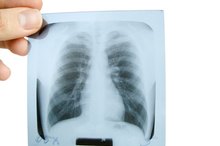How to Calculate Tube Feeding for Nursing
**Some medical conditions prevent people from eating enough calories to meet daily-recommended requirements.
** Other medical conditions require a high number of daily calories that a patient is not able to obtain through oral intake.
Many different types of formulas exist for tube feedings, but calculating the number of calories a patient requires can help a person understand how much of a formula they should get via tube feed. Once a person understands how much formula he gets in 24 hours, he can calculate the rate of the feedings.
Calculate Energy Requirements
Weigh the patient. Record the patient’s weight in pounds. Convert the patient’s weight in pounds into kilograms. To do this, divide the patient’s weight in pounds by 2.2 pounds/kg. For example, a patient that weighs 110 lbs. will weigh 110 / 2.2 lbs/kg = 50 kg.
Isosource 1.5 Nutrition Information
Learn More
Measure the person’s height in inches.
Calculate the person’s required daily amount of calories using the Harris-Benedict Formula. First calculate the person’s basal metabolic rate, or BMR. For examples with women, 655 + (4.35 x weight in pounds) + (4.7 x height in inches) – (4.7 x age in years). For examples with men, 66 + (6.23 x weight in pounds) + (12.7 x height in inches) – (6.8 x age in years).
How Many Milliliters of Water Should You Drink a Day?
Learn More
Multiply the patient’s BMR by the appropriate activity factor using the Harris-Benedict Method to determine the total amount of daily calories needed to maintain current weight. For example: Sedentary: BMR x 1.2; light activity: BMR x 1.375; moderate activity: BMR x 1.55; very active: BMR x 1.725.
Calculate the rate of tube feedings 3. Most formulas provide 1 kcal/ml or 2 kcal/mL. Most formulas come in 250 mL cans. If a person requires 1,500 kcal from tube feeds they will need 4 cans or 1,000 mL of a 2.0 kcal/mL formula. To determine the rate, divide the total volume of tube feeding by 24 hours 3. The rate would be 42 mL/hr. Some people may infuse the total volume over a shorter period of time. If the person wanted to infuse the volume over 8 hours the rate would be 125 mL/hr.
- Record the patient’s weight in pounds.
- To do this, divide the patient’s weight in pounds by 2.2 pounds/kg.
Calculate Water Requirements
Calculate additional water requirements 11. This can be calculated by multiplying the patient weight in kilograms by 35 ml/kg. For example, 50 kg x 35 ml/kg = 1,750 ml of fluid.
Calculate additional water requirements 11. People on tube feedings require additional water to prevent dehydration. Determine the amount of free water percent the formula provides. This information can be found on the formula or by contacting a dietitian. For example, a women weighing 50 kg has been prescribed full strength tube feeds at a rate of 55 mL/hour and requires 1,800 ml of water. According to the label on the tube feeding is 82 percent free water 3.
Multiple the percent free water content by the volume of tube feeding formula that will be administered every 24 hours. For example, 55mL/hr x 24 hours x .82 =1082 mL of free water the formula provides.
Subtract the free water supplied by the formula from the calculated total free water requirement. This equals the remaining volume of free water. For example, 1,800 mL of fluid – 1,082 mL of free water = 718 mL.
Divide the remaining volume of free water by 3 or 4 boluses per day. For example, 718 mL / 3 = 3 boluses of 239 mL of fluid.
Tips
Depending on a person's medical condition, daily calorie and fluid needs may be higher or lower than than recommended daily requirements.
Warnings
Always consult the doctor or nurse to determine the if the rate of feeding is correct for the person's condition. To minimize stomach discomfort, most tube feedings are started slowly and gradually increased over time.
- Calculate additional water requirements 1.
- For example, 50 kg x 35 ml/kg = 1,750 ml of fluid.
Related Articles
References
Writer Bio
Shelly Guillory has been a registered nurse for over seven years, specializing in the areas of oncology, infectious disease and psychiatric nursing. Guillory has been writing since 2005 and is currently pursing degrees in journalism and photography at the University of Utah.









